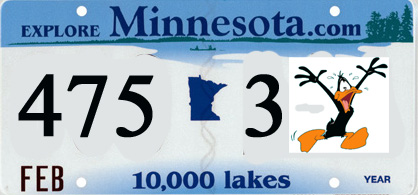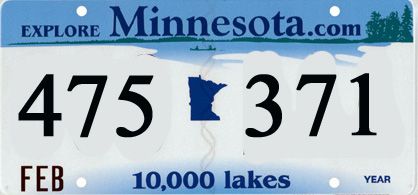Someone suspicious has just pulled someone into a car and driven off and you saw the license plate. Quick! Close your eyes and tell me the number you saw as it screamed by you.
How about now?

Maybe you won’t remember the number, but you’d probably remember Daffy Duck.
That’s — sort of — the idea behind a Massachusetts man’s idea to use fewer numbers and more symbols on license plates.
Wired.com reports that Massachusetts is considering the EZ-ID license plate, which uses “universally recognizable symbols, such as a star, heart, diamond, square, circle, tri-angle, etc., along with alpha numeric characters, to give a graphic that even young children can recognize, remember, and report.” (There’s actually no Daffy Duck symbol, but why couldn’t there be?)
Under the format, each plate has a randomly assigned symbol instead of a number.
Registries would need no more than four characters to allow for 107 million possible combinations, or three times what current plates allow. Fewer characters also allows using a larger font, making plates easier to read.
“If such license plates are indeed easier to memorize or recognize, this could help, for example, a victim relay a license plate to law enforcement after an incident,” said Cynthia Lum, a professor of criminology and director of George Mason University’s Center for Evidence-Based Crime Policy. “Memorizing a plate is difficult in a stressful situation.”
No one’s empirically tested the effectiveness of the new plates, but the math shows that fewer numbers on a license plate makes even a partially remembered registration more valuable. According to Richard, just the style and color of the car with a symbol alone would narrow it down to one of 360 cars, and more information would further focus the search.
“If you said it was a blue SUV and ‘Diamond 5,’ it’s one of about 12 cars,” he said.

